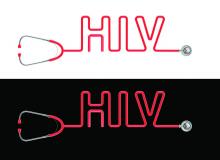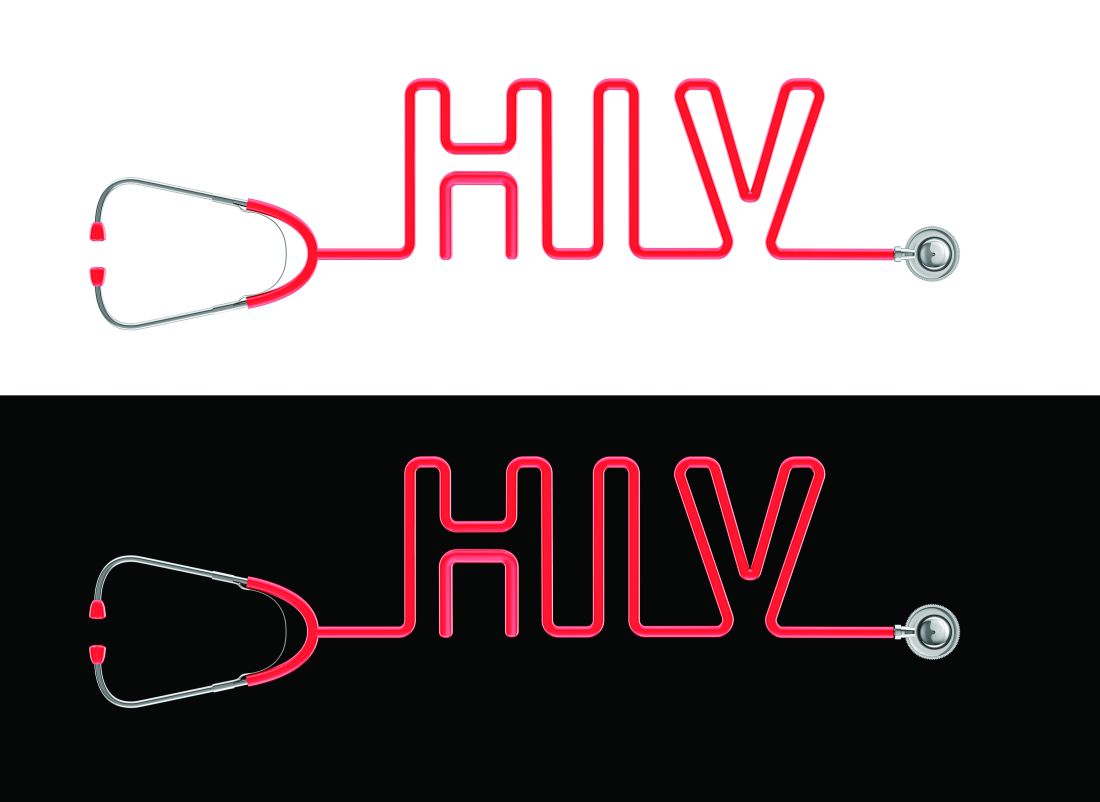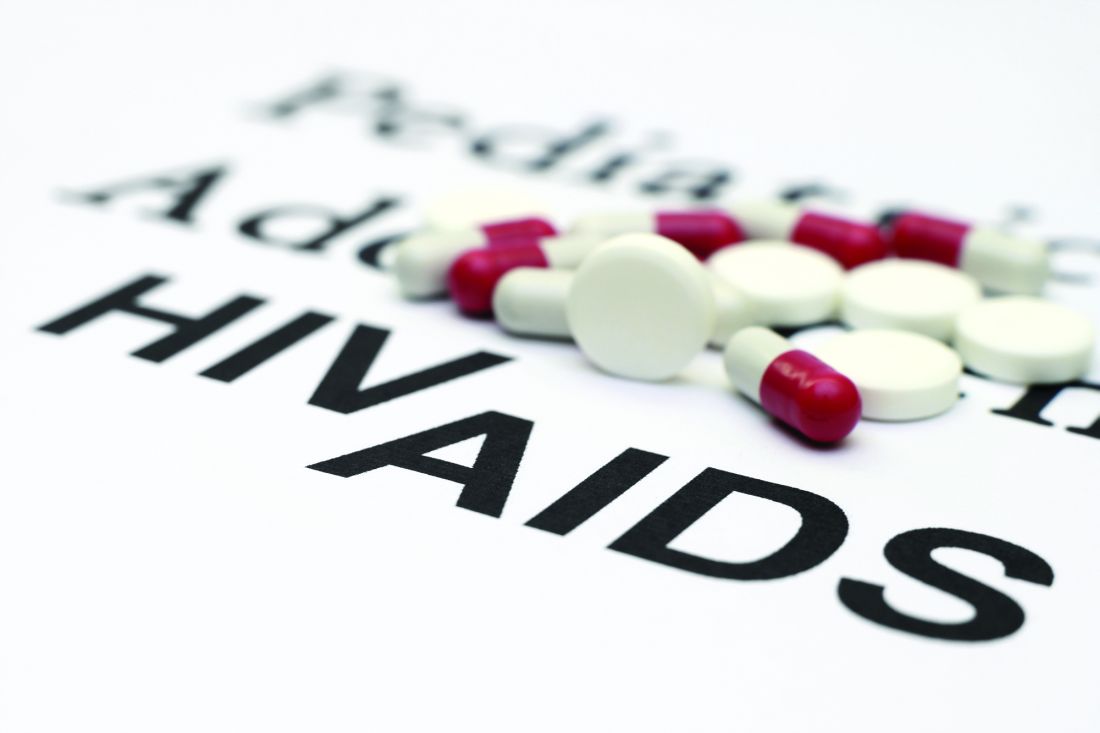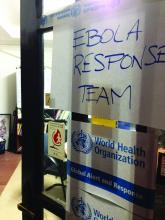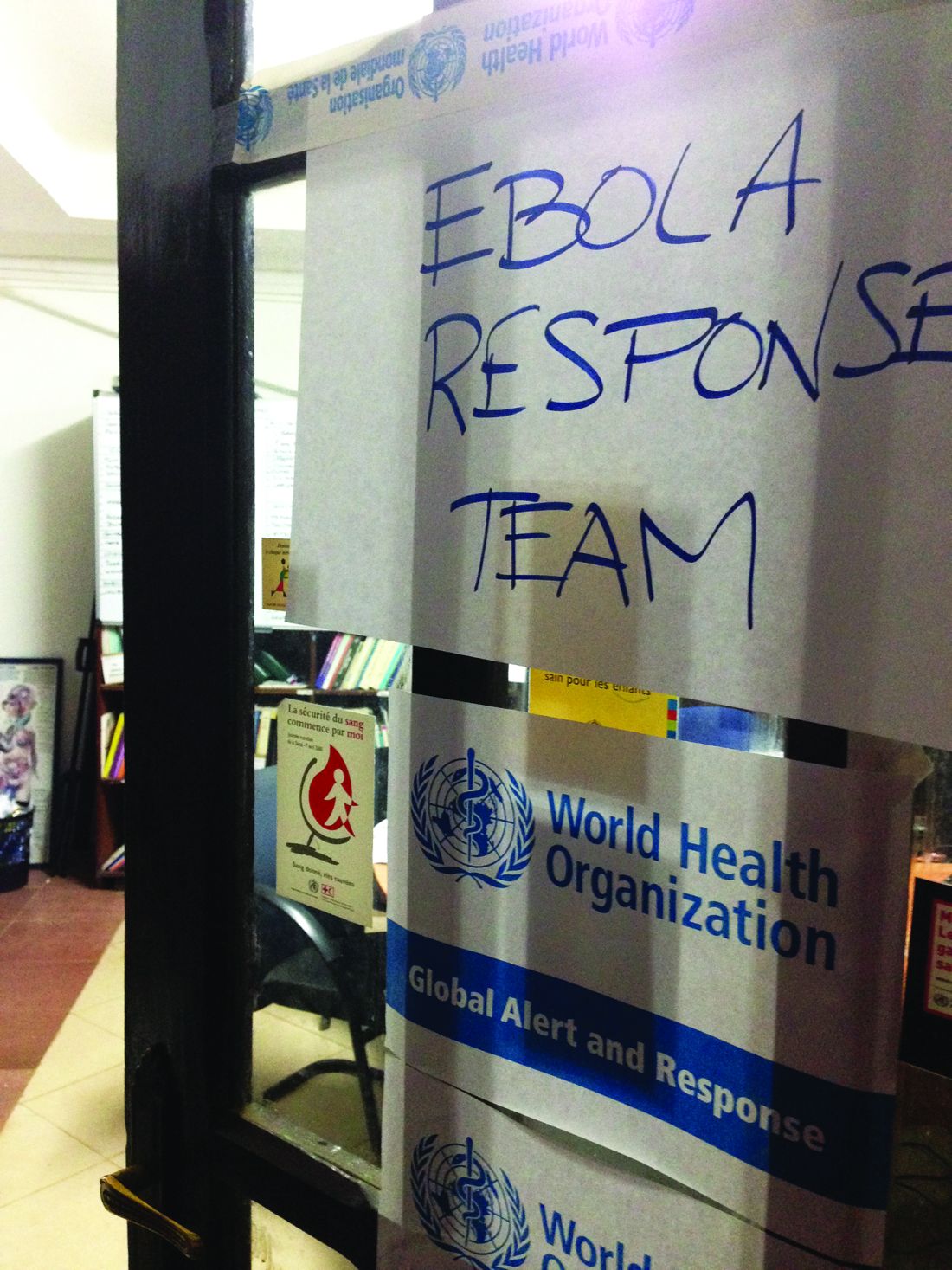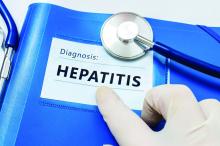User login
Richard Pizzi is editor of The Hospitalist. He has been an editor at Frontline Medical Communications since 2015, and previously served as editor of MDedge publications Hospitalist News and ID Practitioner. He has also worked as an editor and in editorial management roles for HIMSS Media, MedTech Media, and the American Association for Clinical Chemistry. Follow him on Twitter @richpizzi
HM20 course director influenced by POCUS, global health
Dr. Benji Mathews praises mentors for his SHM roles
Benji K. Mathews, MD, SFHM, CLHM, is chief of hospital medicine at Regions Hospital in St. Paul, Minn., and director of point of care ultrasound (POCUS) for hospital medicine at HealthPartners. He is also the course director for the Society of Hospital Medicine’s 2020 Annual Conference (HM20), to be held April 16-18 in San Diego.
Dr. Mathews, an associate professor of medicine at the University of Minnesota, Minneapolis, is recognized by fellow hospitalists as a pioneer in the use of bedside ultrasound. In fact, his Certificate of Leadership in Hospital Medicine (CLHM) was completed with a focus on ultrasound in hospital medicine, and he is a Fellow in Diagnostic Safety through the Society to Improve Diagnosis in Medicine. “While a resident, I took an interest in the field of improving diagnosis and combined it with the 21st-century innovative tool of bedside ultrasound,” he said. “Now, I continue to teach clinicians, educators, and learners.”
In addition to his interest in POCUS and medical education, Dr. Mathews also has a passion for global health, rooted in a commitment to reducing health care disparities both locally and globally. He has worked with medical missions, nongovernmental organizations, and orphanages in Nepal, India, Bolivia, Honduras, and Costa Rica. This led him to complete the global health course at the University of Minnesota.
Dr. Mathews spent a few minutes with The Hospitalist to discuss his background and his new role of course director of the HM20 Annual Conference.
Can you describe your journey to becoming a hospitalist?
I’ve been a hospitalist for most of the last decade. I was fortunate to be a part of a great residency program at the University of Minnesota Medical School, which started a hospital medicine pathway that had several nationally recognized hospital medicine leaders as mentors. I was lucky to work with several of them through the HealthPartners organization in Saint Paul, and that developed in me a further desire to practice hospital medicine. The group and mentors provided opportunities to develop further niches in my practice, like bedside ultrasound.
How did you first get involved with SHM?
I entered SHM through the influence of mentors at HealthPartners, especially Burke Kealey, MD, SFHM, senior medical director for hospital specialties at HealthPartners Medical Group in Bloomington, Minn. and a past president of the Society, who encouraged me to participate on SHM committees. I eventually applied for the Annual Conference Committee, and somehow was accepted.
At that time, I was a community hospitalist among a lot of academic hospitalists. I thought that my voice could probably diversify the conversation, and bring the perspective of an early-career hospitalist to the discussion around educational offerings at the Annual Conference. I benefited from good mentorship on that committee, and with that experience I started getting involved with our local chapter in Minnesota. That was very important. I became our local chapter president and was able to combine my efforts with SHM nationally with our regional initiatives.
You have a particular interest in point-of-care ultrasound for hospitalists. How did that make its way into your involvement with SHM?
Point-of-care ultrasound and diagnostic error work really took off when I was a resident. My interest in that funneled naturally into the base curriculum of the Annual Conference, where once a year I could come together with 18 of my best hospitalist friends from across the nation to discuss curriculum. We talk about what content is applicable for frontline clinicians, what is right for early learners, and what innovations are coming in the future. Toward that last point, I was always involved as a judge or volunteer for the Research, Innovations and Clinical Vignettes – or RIV – competition at the Annual Conference. That’s the scientific abstract and poster competition at the conference. My interest grew to a point at which I decided to apply for one of the leadership roles in the RIV. I had the opportunity to serve as an Innovations Lead at RIV one year, and then chaired the overall RIV competition. Those opportunities helped me better understand the cutting-edge research that hospitalists should be aware of and which researchers and clinicians we should be in conversation with.
All these roles together have led me to my service as HM20 course director. I see myself as a lucky guy who has benefited from great mentorship, and I want to take advantage of my opportunities to serve.
We’ve been told that your elementary school–age children have learned to use ultrasound!
Well, they’ve learned how to use handheld ultrasound devices on each other. They’re able to find their siblings’ kidneys and hearts. I often show an image of this to encourage hospitalists that, if children can pick it up, highly educated providers can do the same and more.
To register for the Society of Hospital Medicine’s 2020 Annual Conference, please visit the HM20 Registration page.
Dr. Benji Mathews praises mentors for his SHM roles
Dr. Benji Mathews praises mentors for his SHM roles
Benji K. Mathews, MD, SFHM, CLHM, is chief of hospital medicine at Regions Hospital in St. Paul, Minn., and director of point of care ultrasound (POCUS) for hospital medicine at HealthPartners. He is also the course director for the Society of Hospital Medicine’s 2020 Annual Conference (HM20), to be held April 16-18 in San Diego.
Dr. Mathews, an associate professor of medicine at the University of Minnesota, Minneapolis, is recognized by fellow hospitalists as a pioneer in the use of bedside ultrasound. In fact, his Certificate of Leadership in Hospital Medicine (CLHM) was completed with a focus on ultrasound in hospital medicine, and he is a Fellow in Diagnostic Safety through the Society to Improve Diagnosis in Medicine. “While a resident, I took an interest in the field of improving diagnosis and combined it with the 21st-century innovative tool of bedside ultrasound,” he said. “Now, I continue to teach clinicians, educators, and learners.”
In addition to his interest in POCUS and medical education, Dr. Mathews also has a passion for global health, rooted in a commitment to reducing health care disparities both locally and globally. He has worked with medical missions, nongovernmental organizations, and orphanages in Nepal, India, Bolivia, Honduras, and Costa Rica. This led him to complete the global health course at the University of Minnesota.
Dr. Mathews spent a few minutes with The Hospitalist to discuss his background and his new role of course director of the HM20 Annual Conference.
Can you describe your journey to becoming a hospitalist?
I’ve been a hospitalist for most of the last decade. I was fortunate to be a part of a great residency program at the University of Minnesota Medical School, which started a hospital medicine pathway that had several nationally recognized hospital medicine leaders as mentors. I was lucky to work with several of them through the HealthPartners organization in Saint Paul, and that developed in me a further desire to practice hospital medicine. The group and mentors provided opportunities to develop further niches in my practice, like bedside ultrasound.
How did you first get involved with SHM?
I entered SHM through the influence of mentors at HealthPartners, especially Burke Kealey, MD, SFHM, senior medical director for hospital specialties at HealthPartners Medical Group in Bloomington, Minn. and a past president of the Society, who encouraged me to participate on SHM committees. I eventually applied for the Annual Conference Committee, and somehow was accepted.
At that time, I was a community hospitalist among a lot of academic hospitalists. I thought that my voice could probably diversify the conversation, and bring the perspective of an early-career hospitalist to the discussion around educational offerings at the Annual Conference. I benefited from good mentorship on that committee, and with that experience I started getting involved with our local chapter in Minnesota. That was very important. I became our local chapter president and was able to combine my efforts with SHM nationally with our regional initiatives.
You have a particular interest in point-of-care ultrasound for hospitalists. How did that make its way into your involvement with SHM?
Point-of-care ultrasound and diagnostic error work really took off when I was a resident. My interest in that funneled naturally into the base curriculum of the Annual Conference, where once a year I could come together with 18 of my best hospitalist friends from across the nation to discuss curriculum. We talk about what content is applicable for frontline clinicians, what is right for early learners, and what innovations are coming in the future. Toward that last point, I was always involved as a judge or volunteer for the Research, Innovations and Clinical Vignettes – or RIV – competition at the Annual Conference. That’s the scientific abstract and poster competition at the conference. My interest grew to a point at which I decided to apply for one of the leadership roles in the RIV. I had the opportunity to serve as an Innovations Lead at RIV one year, and then chaired the overall RIV competition. Those opportunities helped me better understand the cutting-edge research that hospitalists should be aware of and which researchers and clinicians we should be in conversation with.
All these roles together have led me to my service as HM20 course director. I see myself as a lucky guy who has benefited from great mentorship, and I want to take advantage of my opportunities to serve.
We’ve been told that your elementary school–age children have learned to use ultrasound!
Well, they’ve learned how to use handheld ultrasound devices on each other. They’re able to find their siblings’ kidneys and hearts. I often show an image of this to encourage hospitalists that, if children can pick it up, highly educated providers can do the same and more.
To register for the Society of Hospital Medicine’s 2020 Annual Conference, please visit the HM20 Registration page.
Benji K. Mathews, MD, SFHM, CLHM, is chief of hospital medicine at Regions Hospital in St. Paul, Minn., and director of point of care ultrasound (POCUS) for hospital medicine at HealthPartners. He is also the course director for the Society of Hospital Medicine’s 2020 Annual Conference (HM20), to be held April 16-18 in San Diego.
Dr. Mathews, an associate professor of medicine at the University of Minnesota, Minneapolis, is recognized by fellow hospitalists as a pioneer in the use of bedside ultrasound. In fact, his Certificate of Leadership in Hospital Medicine (CLHM) was completed with a focus on ultrasound in hospital medicine, and he is a Fellow in Diagnostic Safety through the Society to Improve Diagnosis in Medicine. “While a resident, I took an interest in the field of improving diagnosis and combined it with the 21st-century innovative tool of bedside ultrasound,” he said. “Now, I continue to teach clinicians, educators, and learners.”
In addition to his interest in POCUS and medical education, Dr. Mathews also has a passion for global health, rooted in a commitment to reducing health care disparities both locally and globally. He has worked with medical missions, nongovernmental organizations, and orphanages in Nepal, India, Bolivia, Honduras, and Costa Rica. This led him to complete the global health course at the University of Minnesota.
Dr. Mathews spent a few minutes with The Hospitalist to discuss his background and his new role of course director of the HM20 Annual Conference.
Can you describe your journey to becoming a hospitalist?
I’ve been a hospitalist for most of the last decade. I was fortunate to be a part of a great residency program at the University of Minnesota Medical School, which started a hospital medicine pathway that had several nationally recognized hospital medicine leaders as mentors. I was lucky to work with several of them through the HealthPartners organization in Saint Paul, and that developed in me a further desire to practice hospital medicine. The group and mentors provided opportunities to develop further niches in my practice, like bedside ultrasound.
How did you first get involved with SHM?
I entered SHM through the influence of mentors at HealthPartners, especially Burke Kealey, MD, SFHM, senior medical director for hospital specialties at HealthPartners Medical Group in Bloomington, Minn. and a past president of the Society, who encouraged me to participate on SHM committees. I eventually applied for the Annual Conference Committee, and somehow was accepted.
At that time, I was a community hospitalist among a lot of academic hospitalists. I thought that my voice could probably diversify the conversation, and bring the perspective of an early-career hospitalist to the discussion around educational offerings at the Annual Conference. I benefited from good mentorship on that committee, and with that experience I started getting involved with our local chapter in Minnesota. That was very important. I became our local chapter president and was able to combine my efforts with SHM nationally with our regional initiatives.
You have a particular interest in point-of-care ultrasound for hospitalists. How did that make its way into your involvement with SHM?
Point-of-care ultrasound and diagnostic error work really took off when I was a resident. My interest in that funneled naturally into the base curriculum of the Annual Conference, where once a year I could come together with 18 of my best hospitalist friends from across the nation to discuss curriculum. We talk about what content is applicable for frontline clinicians, what is right for early learners, and what innovations are coming in the future. Toward that last point, I was always involved as a judge or volunteer for the Research, Innovations and Clinical Vignettes – or RIV – competition at the Annual Conference. That’s the scientific abstract and poster competition at the conference. My interest grew to a point at which I decided to apply for one of the leadership roles in the RIV. I had the opportunity to serve as an Innovations Lead at RIV one year, and then chaired the overall RIV competition. Those opportunities helped me better understand the cutting-edge research that hospitalists should be aware of and which researchers and clinicians we should be in conversation with.
All these roles together have led me to my service as HM20 course director. I see myself as a lucky guy who has benefited from great mentorship, and I want to take advantage of my opportunities to serve.
We’ve been told that your elementary school–age children have learned to use ultrasound!
Well, they’ve learned how to use handheld ultrasound devices on each other. They’re able to find their siblings’ kidneys and hearts. I often show an image of this to encourage hospitalists that, if children can pick it up, highly educated providers can do the same and more.
To register for the Society of Hospital Medicine’s 2020 Annual Conference, please visit the HM20 Registration page.
FDA approves Xyrem to treat children with narcolepsy
The Food and Drug Administration has cleared Xyrem (sodium oxybate) oral solution to treat cataplexy and excessive daytime sleepiness in patients ages 7-17 with narcolepsy.
The central nervous system depressant previously had been approved to treat cataplexy in adults with narcolepsy.
The current approval was granted by the FDA under a Priority Review designation. Xyrem also received the FDA’s Orphan Drug designation, which is intended to encourage the development of drugs for rare diseases.
The agency noted in a press release, however, that the drug would continue to be available only through risk evaluation mitigation strategy (REMS) programs because of “the risk of serious outcomes resulting from inappropriate prescribing, misuse, abuse and diversion.” Xyrem either alone or in combination with other CNS depressants may be associated with reactions including seizure, respiratory depression, decreases in the level of consciousness, coma, and death, the FDA said.
The most common adverse reactions in pediatric patients were enuresis, nausea, headache, vomiting, weight decrease, decreased appetite, and dizziness.
For more information on prescribing Xyrem for pediatric patients, see the revised labeling information on the FDA website.
The Food and Drug Administration has cleared Xyrem (sodium oxybate) oral solution to treat cataplexy and excessive daytime sleepiness in patients ages 7-17 with narcolepsy.
The central nervous system depressant previously had been approved to treat cataplexy in adults with narcolepsy.
The current approval was granted by the FDA under a Priority Review designation. Xyrem also received the FDA’s Orphan Drug designation, which is intended to encourage the development of drugs for rare diseases.
The agency noted in a press release, however, that the drug would continue to be available only through risk evaluation mitigation strategy (REMS) programs because of “the risk of serious outcomes resulting from inappropriate prescribing, misuse, abuse and diversion.” Xyrem either alone or in combination with other CNS depressants may be associated with reactions including seizure, respiratory depression, decreases in the level of consciousness, coma, and death, the FDA said.
The most common adverse reactions in pediatric patients were enuresis, nausea, headache, vomiting, weight decrease, decreased appetite, and dizziness.
For more information on prescribing Xyrem for pediatric patients, see the revised labeling information on the FDA website.
The Food and Drug Administration has cleared Xyrem (sodium oxybate) oral solution to treat cataplexy and excessive daytime sleepiness in patients ages 7-17 with narcolepsy.
The central nervous system depressant previously had been approved to treat cataplexy in adults with narcolepsy.
The current approval was granted by the FDA under a Priority Review designation. Xyrem also received the FDA’s Orphan Drug designation, which is intended to encourage the development of drugs for rare diseases.
The agency noted in a press release, however, that the drug would continue to be available only through risk evaluation mitigation strategy (REMS) programs because of “the risk of serious outcomes resulting from inappropriate prescribing, misuse, abuse and diversion.” Xyrem either alone or in combination with other CNS depressants may be associated with reactions including seizure, respiratory depression, decreases in the level of consciousness, coma, and death, the FDA said.
The most common adverse reactions in pediatric patients were enuresis, nausea, headache, vomiting, weight decrease, decreased appetite, and dizziness.
For more information on prescribing Xyrem for pediatric patients, see the revised labeling information on the FDA website.
What is the HIV state of the art?
Learn about the “State of the Art” in HIV care from three of the biggest names in the business on Thursday, Oct. 5, at IDWeek 2017 in San Diego.
Joseph Eron Jr., MD, director of the UNC Center for AIDS Research Medicine at the University of North Carolina at Chapel Hill, in his talk “What to Start and When to Switch,” will help clinicians identify the most appropriate antiretroviral therapy regimens for initial HIV treatment in adults, as well as subsequent therapies for management of infection. Much of Dr. Eron’s research has focused on HIV resistance to antiretroviral therapy and the use of resistance testing and pharmacokinetic assessment to construct successful therapy.
Speaking about cost considerations in HIV treatment is Rochelle Walensky, MD, MPH, of the division of infectious diseases, Massachusetts General Hospital. Dr. Walensky will help attendees better understand and evaluate drug costs and their potential impact on HIV treatment. Dr. Walensky has published work on the impact of routine HIV screening, on the clinical and cost-effectiveness of HIV vaccines of varying efficacies, and on the value of primary genotypic resistance testing.
Moderators will be Eric Daar, MD, of Harbor-UCLA Medical Center, and Monica Gandhi, MD, MPH, of the University of California, San Francisco.
The symposium will take place Thursday, Oct. 5, from 8:30 a.m. to 10:00 a.m. in Room 06CF at the San Diego Convention Center.
rpizzi@frontlinemedcom.com
On Twitter @richpizzi
Learn about the “State of the Art” in HIV care from three of the biggest names in the business on Thursday, Oct. 5, at IDWeek 2017 in San Diego.
Joseph Eron Jr., MD, director of the UNC Center for AIDS Research Medicine at the University of North Carolina at Chapel Hill, in his talk “What to Start and When to Switch,” will help clinicians identify the most appropriate antiretroviral therapy regimens for initial HIV treatment in adults, as well as subsequent therapies for management of infection. Much of Dr. Eron’s research has focused on HIV resistance to antiretroviral therapy and the use of resistance testing and pharmacokinetic assessment to construct successful therapy.
Speaking about cost considerations in HIV treatment is Rochelle Walensky, MD, MPH, of the division of infectious diseases, Massachusetts General Hospital. Dr. Walensky will help attendees better understand and evaluate drug costs and their potential impact on HIV treatment. Dr. Walensky has published work on the impact of routine HIV screening, on the clinical and cost-effectiveness of HIV vaccines of varying efficacies, and on the value of primary genotypic resistance testing.
Moderators will be Eric Daar, MD, of Harbor-UCLA Medical Center, and Monica Gandhi, MD, MPH, of the University of California, San Francisco.
The symposium will take place Thursday, Oct. 5, from 8:30 a.m. to 10:00 a.m. in Room 06CF at the San Diego Convention Center.
rpizzi@frontlinemedcom.com
On Twitter @richpizzi
Learn about the “State of the Art” in HIV care from three of the biggest names in the business on Thursday, Oct. 5, at IDWeek 2017 in San Diego.
Joseph Eron Jr., MD, director of the UNC Center for AIDS Research Medicine at the University of North Carolina at Chapel Hill, in his talk “What to Start and When to Switch,” will help clinicians identify the most appropriate antiretroviral therapy regimens for initial HIV treatment in adults, as well as subsequent therapies for management of infection. Much of Dr. Eron’s research has focused on HIV resistance to antiretroviral therapy and the use of resistance testing and pharmacokinetic assessment to construct successful therapy.
Speaking about cost considerations in HIV treatment is Rochelle Walensky, MD, MPH, of the division of infectious diseases, Massachusetts General Hospital. Dr. Walensky will help attendees better understand and evaluate drug costs and their potential impact on HIV treatment. Dr. Walensky has published work on the impact of routine HIV screening, on the clinical and cost-effectiveness of HIV vaccines of varying efficacies, and on the value of primary genotypic resistance testing.
Moderators will be Eric Daar, MD, of Harbor-UCLA Medical Center, and Monica Gandhi, MD, MPH, of the University of California, San Francisco.
The symposium will take place Thursday, Oct. 5, from 8:30 a.m. to 10:00 a.m. in Room 06CF at the San Diego Convention Center.
rpizzi@frontlinemedcom.com
On Twitter @richpizzi
IDWeek 2017 opens in San Diego
facing infectious diseases clinicians and researchers in the 21st century.
Premeeting workshops and symposia occupy most of the first 2 days of the event, with highlights including a session on managing infections in opioid users and a “late breaker” symposium addressing the latest on the H7N9 outbreak in China, the current findings and recommendations regarding Candida auris, and the epidemiology of the recent Legionella outbreaks in the United States. Another late breaker session focuses on the recent spate of hepatitis A outbreaks, including one in conference host city San Diego, primarily among the homeless population.
IDWeek is the combined annual meeting of the Infectious Diseases Society of America (IDSA), the Society for Healthcare Epidemiology of America (SHEA), the HIV Medicine Association (HIVMA), and the Pediatric Infectious Diseases Society (PIDS). The first IDWeek was held in 2012.
One intriguing interactive session – aptly-titled “Nightmare Bugs” – will investigate the problems posed by multidrug-resistant organisms and the need for new antimicrobials to defeat them.
There are many sessions and posters addressing evergreen clinical topics for ID clinicians, such as antimicrobial resistance, antibiotic stewardship, surgical site infections, bacteremia and sepsis, Clostridium difficile, hepatitis care, and HIV care. But the education committee at IDWeek always manages to touch on topics in the news. For instance, one late breaker session will feature a discussion of the nexus between the opioid crisis and infectious diseases, the outbreak of cholera in Yemen, and the epidemiology of the yellow fever outbreak in Brazil.
Featured speakers at the event include James M. Hughes, MD, professor of medicine at Emory University, Atlanta, who will discuss the importance of a One Health approach to emerging microbial threats, and Connie Celum, MD, MPH, professor of global health and medicine, University of Washington, Seattle, who intends to describe the progress in effective HIV prevention interventions and lessons learned in implementation. Neil O. Fishman, MD, of the University of Pennsylvania Perelman School of Medicine, is delivering the annual SHEA lecture at IDWeek, and will explain how ID physicians and epidemiologists can promote interventions to achieve high reliability in health care. Renowned ID researcher Janet Englund, MD, of Seattle Children’s Hospital, will discuss the potential future therapies to prevent or treat respiratory viral infections in high-risk pediatric patients.
The 2017 conference will close with a three-part plenary – “21st Century Cures” – featuring ID luminaries Christopher Karp, MD, of the Bill & Melinda Gates Foundation, James E. Crowe Jr., MD, of Vanderbilt University Medical Center in Nashville, Tenn., and David Thomas, MD, MPH, of Johns Hopkins University in Baltimore.
rpizzi@frontlinemedcom.com
On Twitter @richpizzi
facing infectious diseases clinicians and researchers in the 21st century.
Premeeting workshops and symposia occupy most of the first 2 days of the event, with highlights including a session on managing infections in opioid users and a “late breaker” symposium addressing the latest on the H7N9 outbreak in China, the current findings and recommendations regarding Candida auris, and the epidemiology of the recent Legionella outbreaks in the United States. Another late breaker session focuses on the recent spate of hepatitis A outbreaks, including one in conference host city San Diego, primarily among the homeless population.
IDWeek is the combined annual meeting of the Infectious Diseases Society of America (IDSA), the Society for Healthcare Epidemiology of America (SHEA), the HIV Medicine Association (HIVMA), and the Pediatric Infectious Diseases Society (PIDS). The first IDWeek was held in 2012.
One intriguing interactive session – aptly-titled “Nightmare Bugs” – will investigate the problems posed by multidrug-resistant organisms and the need for new antimicrobials to defeat them.
There are many sessions and posters addressing evergreen clinical topics for ID clinicians, such as antimicrobial resistance, antibiotic stewardship, surgical site infections, bacteremia and sepsis, Clostridium difficile, hepatitis care, and HIV care. But the education committee at IDWeek always manages to touch on topics in the news. For instance, one late breaker session will feature a discussion of the nexus between the opioid crisis and infectious diseases, the outbreak of cholera in Yemen, and the epidemiology of the yellow fever outbreak in Brazil.
Featured speakers at the event include James M. Hughes, MD, professor of medicine at Emory University, Atlanta, who will discuss the importance of a One Health approach to emerging microbial threats, and Connie Celum, MD, MPH, professor of global health and medicine, University of Washington, Seattle, who intends to describe the progress in effective HIV prevention interventions and lessons learned in implementation. Neil O. Fishman, MD, of the University of Pennsylvania Perelman School of Medicine, is delivering the annual SHEA lecture at IDWeek, and will explain how ID physicians and epidemiologists can promote interventions to achieve high reliability in health care. Renowned ID researcher Janet Englund, MD, of Seattle Children’s Hospital, will discuss the potential future therapies to prevent or treat respiratory viral infections in high-risk pediatric patients.
The 2017 conference will close with a three-part plenary – “21st Century Cures” – featuring ID luminaries Christopher Karp, MD, of the Bill & Melinda Gates Foundation, James E. Crowe Jr., MD, of Vanderbilt University Medical Center in Nashville, Tenn., and David Thomas, MD, MPH, of Johns Hopkins University in Baltimore.
rpizzi@frontlinemedcom.com
On Twitter @richpizzi
facing infectious diseases clinicians and researchers in the 21st century.
Premeeting workshops and symposia occupy most of the first 2 days of the event, with highlights including a session on managing infections in opioid users and a “late breaker” symposium addressing the latest on the H7N9 outbreak in China, the current findings and recommendations regarding Candida auris, and the epidemiology of the recent Legionella outbreaks in the United States. Another late breaker session focuses on the recent spate of hepatitis A outbreaks, including one in conference host city San Diego, primarily among the homeless population.
IDWeek is the combined annual meeting of the Infectious Diseases Society of America (IDSA), the Society for Healthcare Epidemiology of America (SHEA), the HIV Medicine Association (HIVMA), and the Pediatric Infectious Diseases Society (PIDS). The first IDWeek was held in 2012.
One intriguing interactive session – aptly-titled “Nightmare Bugs” – will investigate the problems posed by multidrug-resistant organisms and the need for new antimicrobials to defeat them.
There are many sessions and posters addressing evergreen clinical topics for ID clinicians, such as antimicrobial resistance, antibiotic stewardship, surgical site infections, bacteremia and sepsis, Clostridium difficile, hepatitis care, and HIV care. But the education committee at IDWeek always manages to touch on topics in the news. For instance, one late breaker session will feature a discussion of the nexus between the opioid crisis and infectious diseases, the outbreak of cholera in Yemen, and the epidemiology of the yellow fever outbreak in Brazil.
Featured speakers at the event include James M. Hughes, MD, professor of medicine at Emory University, Atlanta, who will discuss the importance of a One Health approach to emerging microbial threats, and Connie Celum, MD, MPH, professor of global health and medicine, University of Washington, Seattle, who intends to describe the progress in effective HIV prevention interventions and lessons learned in implementation. Neil O. Fishman, MD, of the University of Pennsylvania Perelman School of Medicine, is delivering the annual SHEA lecture at IDWeek, and will explain how ID physicians and epidemiologists can promote interventions to achieve high reliability in health care. Renowned ID researcher Janet Englund, MD, of Seattle Children’s Hospital, will discuss the potential future therapies to prevent or treat respiratory viral infections in high-risk pediatric patients.
The 2017 conference will close with a three-part plenary – “21st Century Cures” – featuring ID luminaries Christopher Karp, MD, of the Bill & Melinda Gates Foundation, James E. Crowe Jr., MD, of Vanderbilt University Medical Center in Nashville, Tenn., and David Thomas, MD, MPH, of Johns Hopkins University in Baltimore.
rpizzi@frontlinemedcom.com
On Twitter @richpizzi
FDA approves generic version of HIV drug Truvada
The U.S. Food and Drug Administration has approved the first generic version of emtricitabine and tenofovir disoproxil fumarate tablets, previously known by the brand name Truvada, for the treatment of HIV-1 infection.
Like Truvada, the generic version of the drug – produced by Teva Pharmaceuticals USA and approved in 200-mg/300-mg tablet form – is indicated for use in combination with other antiretrovirals for patients infected with HIV-1 and for pre-exposure prophylaxis (PrEP) to prevent sexually-acquired HIV infection in high-risk adults.
Women infected with HIV-1 should not breastfeed while taking emtricitabine and tenofovir disoproxil fumarate, the FDA said, and the drug can be used only in pediatric patients weighing more than 17 kg.
rpizzi@frontlinemedcom.com
On Twitter @richpizzi
The U.S. Food and Drug Administration has approved the first generic version of emtricitabine and tenofovir disoproxil fumarate tablets, previously known by the brand name Truvada, for the treatment of HIV-1 infection.
Like Truvada, the generic version of the drug – produced by Teva Pharmaceuticals USA and approved in 200-mg/300-mg tablet form – is indicated for use in combination with other antiretrovirals for patients infected with HIV-1 and for pre-exposure prophylaxis (PrEP) to prevent sexually-acquired HIV infection in high-risk adults.
Women infected with HIV-1 should not breastfeed while taking emtricitabine and tenofovir disoproxil fumarate, the FDA said, and the drug can be used only in pediatric patients weighing more than 17 kg.
rpizzi@frontlinemedcom.com
On Twitter @richpizzi
The U.S. Food and Drug Administration has approved the first generic version of emtricitabine and tenofovir disoproxil fumarate tablets, previously known by the brand name Truvada, for the treatment of HIV-1 infection.
Like Truvada, the generic version of the drug – produced by Teva Pharmaceuticals USA and approved in 200-mg/300-mg tablet form – is indicated for use in combination with other antiretrovirals for patients infected with HIV-1 and for pre-exposure prophylaxis (PrEP) to prevent sexually-acquired HIV infection in high-risk adults.
Women infected with HIV-1 should not breastfeed while taking emtricitabine and tenofovir disoproxil fumarate, the FDA said, and the drug can be used only in pediatric patients weighing more than 17 kg.
rpizzi@frontlinemedcom.com
On Twitter @richpizzi
HIV research update: April 2017
A great volume of HIV and AIDS research enters the medical literature every month. It’s difficult to monitor everything, so here’s a quick look at some notable news items and journal articles published over the past few weeks.
A study of the clinic experiences of U.S. veterans living with HIV found that those who were not retained in care experienced barriers to retention involving dissatisfaction with clinic wait times, low confidence in clinicians, and customer service concerns.
A study in AIDS Care found that women were less likely to disclose HIV status to their family members in the HAART era after adjusting for social network type, comfort level of disclosure, time to first disclosure, and length of follow-up time.
Incident drug resistance rates were low with “real-world” use of integrase inhibitor (INSTI)-based regimens by HIV-infected patients, a study in the journal AIDS found, although incomplete ART adherence and low CD4 count were associated with increased resistance rates regardless of which INSTI was prescribed.
A recent study found that HIV-infected and HIV/HCV-coinfected patients in opiate replacement treatment with methadone or buprenorphine require higher methadone doses than those without these infections.
Another study in AIDS found no association between HIV or AIDS diagnosis rates and criminal exposure laws across U.S. states over time, suggesting that these laws have had no detectable HIV prevention effect.
Concerns about memory difficulties, anxiety and depression, as well as gender, ethnicity, financial factors, and relationship status, are important contributors to quality of life in older people living with HIV, according to a study in AIDS Research and Therapy.
Italian researchers said that the non-negligible prevalence of metabolic syndrome among HIV-infected patients under combination antiretroviral therapy requires a careful and periodic monitoring of its components, with particular attention to dyslipidemia and hypertension.
Rectal sexually transmitted infections are independently associated with HIV acquisition, according to a study of a Seattle STD clinic. The authors said the findings support the hypothesis that rectal STI play a biologically mediated causal role in HIV acquisition and support screening/treatment of STI for HIV prevention.
A study published in JAIDS found that long-term treatment of HIV patients with tenofovir disoproxil fumarate leads to impaired bone health, not only in terms of bone mineral density, but also in terms of bone quality, another determinant of overall bone strength.
Engaging pregnant couples in couple HIV testing and counseling can have prevention benefits for couples with an HIV-infected pregnant woman, but additional prevention approaches may be needed, according to a report in JAIDS.
A study in the journal AIDS found that frailty according to Study of Osteoporotic Fractures criteria is associated with low spinal bone mineral density values in female HIV-infected patients and osteoporosis in male HIV-infected patients.
In a study of largely well-suppressed HIV-positive participants and HIV-negative controls, HIV-positive status was significantly and independently associated with worse physical and mental health-related quality of life and with an increased likelihood of depression.
rpizzi@frontlinemedcom.com
On Twitter @richpizzi
A great volume of HIV and AIDS research enters the medical literature every month. It’s difficult to monitor everything, so here’s a quick look at some notable news items and journal articles published over the past few weeks.
A study of the clinic experiences of U.S. veterans living with HIV found that those who were not retained in care experienced barriers to retention involving dissatisfaction with clinic wait times, low confidence in clinicians, and customer service concerns.
A study in AIDS Care found that women were less likely to disclose HIV status to their family members in the HAART era after adjusting for social network type, comfort level of disclosure, time to first disclosure, and length of follow-up time.
Incident drug resistance rates were low with “real-world” use of integrase inhibitor (INSTI)-based regimens by HIV-infected patients, a study in the journal AIDS found, although incomplete ART adherence and low CD4 count were associated with increased resistance rates regardless of which INSTI was prescribed.
A recent study found that HIV-infected and HIV/HCV-coinfected patients in opiate replacement treatment with methadone or buprenorphine require higher methadone doses than those without these infections.
Another study in AIDS found no association between HIV or AIDS diagnosis rates and criminal exposure laws across U.S. states over time, suggesting that these laws have had no detectable HIV prevention effect.
Concerns about memory difficulties, anxiety and depression, as well as gender, ethnicity, financial factors, and relationship status, are important contributors to quality of life in older people living with HIV, according to a study in AIDS Research and Therapy.
Italian researchers said that the non-negligible prevalence of metabolic syndrome among HIV-infected patients under combination antiretroviral therapy requires a careful and periodic monitoring of its components, with particular attention to dyslipidemia and hypertension.
Rectal sexually transmitted infections are independently associated with HIV acquisition, according to a study of a Seattle STD clinic. The authors said the findings support the hypothesis that rectal STI play a biologically mediated causal role in HIV acquisition and support screening/treatment of STI for HIV prevention.
A study published in JAIDS found that long-term treatment of HIV patients with tenofovir disoproxil fumarate leads to impaired bone health, not only in terms of bone mineral density, but also in terms of bone quality, another determinant of overall bone strength.
Engaging pregnant couples in couple HIV testing and counseling can have prevention benefits for couples with an HIV-infected pregnant woman, but additional prevention approaches may be needed, according to a report in JAIDS.
A study in the journal AIDS found that frailty according to Study of Osteoporotic Fractures criteria is associated with low spinal bone mineral density values in female HIV-infected patients and osteoporosis in male HIV-infected patients.
In a study of largely well-suppressed HIV-positive participants and HIV-negative controls, HIV-positive status was significantly and independently associated with worse physical and mental health-related quality of life and with an increased likelihood of depression.
rpizzi@frontlinemedcom.com
On Twitter @richpizzi
A great volume of HIV and AIDS research enters the medical literature every month. It’s difficult to monitor everything, so here’s a quick look at some notable news items and journal articles published over the past few weeks.
A study of the clinic experiences of U.S. veterans living with HIV found that those who were not retained in care experienced barriers to retention involving dissatisfaction with clinic wait times, low confidence in clinicians, and customer service concerns.
A study in AIDS Care found that women were less likely to disclose HIV status to their family members in the HAART era after adjusting for social network type, comfort level of disclosure, time to first disclosure, and length of follow-up time.
Incident drug resistance rates were low with “real-world” use of integrase inhibitor (INSTI)-based regimens by HIV-infected patients, a study in the journal AIDS found, although incomplete ART adherence and low CD4 count were associated with increased resistance rates regardless of which INSTI was prescribed.
A recent study found that HIV-infected and HIV/HCV-coinfected patients in opiate replacement treatment with methadone or buprenorphine require higher methadone doses than those without these infections.
Another study in AIDS found no association between HIV or AIDS diagnosis rates and criminal exposure laws across U.S. states over time, suggesting that these laws have had no detectable HIV prevention effect.
Concerns about memory difficulties, anxiety and depression, as well as gender, ethnicity, financial factors, and relationship status, are important contributors to quality of life in older people living with HIV, according to a study in AIDS Research and Therapy.
Italian researchers said that the non-negligible prevalence of metabolic syndrome among HIV-infected patients under combination antiretroviral therapy requires a careful and periodic monitoring of its components, with particular attention to dyslipidemia and hypertension.
Rectal sexually transmitted infections are independently associated with HIV acquisition, according to a study of a Seattle STD clinic. The authors said the findings support the hypothesis that rectal STI play a biologically mediated causal role in HIV acquisition and support screening/treatment of STI for HIV prevention.
A study published in JAIDS found that long-term treatment of HIV patients with tenofovir disoproxil fumarate leads to impaired bone health, not only in terms of bone mineral density, but also in terms of bone quality, another determinant of overall bone strength.
Engaging pregnant couples in couple HIV testing and counseling can have prevention benefits for couples with an HIV-infected pregnant woman, but additional prevention approaches may be needed, according to a report in JAIDS.
A study in the journal AIDS found that frailty according to Study of Osteoporotic Fractures criteria is associated with low spinal bone mineral density values in female HIV-infected patients and osteoporosis in male HIV-infected patients.
In a study of largely well-suppressed HIV-positive participants and HIV-negative controls, HIV-positive status was significantly and independently associated with worse physical and mental health-related quality of life and with an increased likelihood of depression.
rpizzi@frontlinemedcom.com
On Twitter @richpizzi
Ebola research update: March 2017
The struggle to defeat Ebola virus disease continues globally, although it may not always make the headlines. To catch up on what you may have missed, here are some notable news items and journal articles published over the past few weeks that are worth a second look.
Malaria parasite coinfections were common in patients presenting to Ebola treatment units in Sierra Leone and conferred an increased mortality risk in patients infected with Ebola virus, according to a study in the Lancet Infectious Diseases.
New oral vaccine technologies hold great promise as a tool for protecting endangered tropical wildlife from Ebola virus disease, according to a study on captive chimpanzees published in Scientific Reports.
A European study in JAMA found that immunity after heterologous primary and booster vaccination with Ebola virus vaccines Ad26.ZEBOV and MVA-BN-Filo persisted at 1 year. The researchers said a strategy of preemptive use of an Ad26.ZEBOV, followed by MVA-BN-Filo immunization schedule in at-risk populations may offer advantages over reactive use of single-dose vaccine regimens.
An analysis in Cell Host & Microbe concluded that the Ebola virus glycoprotein (GP) acquired an A82V change during the West Africa epidemic and that this change altered the capacity of GP to be activated by host factors, enhancing infection of human cells.
The overall decrease in bushmeat consumption in West Africa associated with the Ebola crisis may have had a short-term positive effect on vulnerable wildlife populations, according to a recent study.
A study in the Journal of Virology found that limiting the excessive TLR4-mediated proinflammatory response in Ebola virus infection should be considered as a potential supportive treatment option for Ebola virus disease.
The Clinical Data Interchange Standards Consortium and the Infectious Diseases Data Observatory have announced the availability of a new standard to assist in the collection, aggregation, and analysis of Ebola virus disease research data.
A small study published in PLOS One found that treatment with interferon beta-1a of people with Ebola virus disease may be associated with clearance of virus from blood, better clinical features, and potentially, improved survival.
Finally, medical evacuation of patients with suspected potentially fatal, infectious diseases such as Ebola virus is feasible using a light isolator containment pod for patients without critical dysfunctions, according to a study in BMC Emergency Medicine.
rpizzi@frontlinemedcom.com
On Twitter @richpizzi
The struggle to defeat Ebola virus disease continues globally, although it may not always make the headlines. To catch up on what you may have missed, here are some notable news items and journal articles published over the past few weeks that are worth a second look.
Malaria parasite coinfections were common in patients presenting to Ebola treatment units in Sierra Leone and conferred an increased mortality risk in patients infected with Ebola virus, according to a study in the Lancet Infectious Diseases.
New oral vaccine technologies hold great promise as a tool for protecting endangered tropical wildlife from Ebola virus disease, according to a study on captive chimpanzees published in Scientific Reports.
A European study in JAMA found that immunity after heterologous primary and booster vaccination with Ebola virus vaccines Ad26.ZEBOV and MVA-BN-Filo persisted at 1 year. The researchers said a strategy of preemptive use of an Ad26.ZEBOV, followed by MVA-BN-Filo immunization schedule in at-risk populations may offer advantages over reactive use of single-dose vaccine regimens.
An analysis in Cell Host & Microbe concluded that the Ebola virus glycoprotein (GP) acquired an A82V change during the West Africa epidemic and that this change altered the capacity of GP to be activated by host factors, enhancing infection of human cells.
The overall decrease in bushmeat consumption in West Africa associated with the Ebola crisis may have had a short-term positive effect on vulnerable wildlife populations, according to a recent study.
A study in the Journal of Virology found that limiting the excessive TLR4-mediated proinflammatory response in Ebola virus infection should be considered as a potential supportive treatment option for Ebola virus disease.
The Clinical Data Interchange Standards Consortium and the Infectious Diseases Data Observatory have announced the availability of a new standard to assist in the collection, aggregation, and analysis of Ebola virus disease research data.
A small study published in PLOS One found that treatment with interferon beta-1a of people with Ebola virus disease may be associated with clearance of virus from blood, better clinical features, and potentially, improved survival.
Finally, medical evacuation of patients with suspected potentially fatal, infectious diseases such as Ebola virus is feasible using a light isolator containment pod for patients without critical dysfunctions, according to a study in BMC Emergency Medicine.
rpizzi@frontlinemedcom.com
On Twitter @richpizzi
The struggle to defeat Ebola virus disease continues globally, although it may not always make the headlines. To catch up on what you may have missed, here are some notable news items and journal articles published over the past few weeks that are worth a second look.
Malaria parasite coinfections were common in patients presenting to Ebola treatment units in Sierra Leone and conferred an increased mortality risk in patients infected with Ebola virus, according to a study in the Lancet Infectious Diseases.
New oral vaccine technologies hold great promise as a tool for protecting endangered tropical wildlife from Ebola virus disease, according to a study on captive chimpanzees published in Scientific Reports.
A European study in JAMA found that immunity after heterologous primary and booster vaccination with Ebola virus vaccines Ad26.ZEBOV and MVA-BN-Filo persisted at 1 year. The researchers said a strategy of preemptive use of an Ad26.ZEBOV, followed by MVA-BN-Filo immunization schedule in at-risk populations may offer advantages over reactive use of single-dose vaccine regimens.
An analysis in Cell Host & Microbe concluded that the Ebola virus glycoprotein (GP) acquired an A82V change during the West Africa epidemic and that this change altered the capacity of GP to be activated by host factors, enhancing infection of human cells.
The overall decrease in bushmeat consumption in West Africa associated with the Ebola crisis may have had a short-term positive effect on vulnerable wildlife populations, according to a recent study.
A study in the Journal of Virology found that limiting the excessive TLR4-mediated proinflammatory response in Ebola virus infection should be considered as a potential supportive treatment option for Ebola virus disease.
The Clinical Data Interchange Standards Consortium and the Infectious Diseases Data Observatory have announced the availability of a new standard to assist in the collection, aggregation, and analysis of Ebola virus disease research data.
A small study published in PLOS One found that treatment with interferon beta-1a of people with Ebola virus disease may be associated with clearance of virus from blood, better clinical features, and potentially, improved survival.
Finally, medical evacuation of patients with suspected potentially fatal, infectious diseases such as Ebola virus is feasible using a light isolator containment pod for patients without critical dysfunctions, according to a study in BMC Emergency Medicine.
rpizzi@frontlinemedcom.com
On Twitter @richpizzi
HIV research update: March 2017
A great volume of HIV and AIDS research enters the medical literature every month. It’s difficult to monitor everything, so here’s a quick look at some notable news items and journal articles published over the past few weeks.
The prevalence of multidrug-resistant gram-negative organisms is significantly higher in HIV-positive males than in HIV-negative males, according to a study in BMC Infectious Diseases.
“[The] effects of HIV-1 on epitope evolution in M. tuberculosis may have implications for the design of [Mycobacterium] tuberculosis vaccines that are intended for use in populations with high HIV-1 infection rates,” says a report published in Molecular Biology and Evolution.
A study in AIDS Care found that depression partially mediated the relationship between basic psychological needs and quality of life in people living with HIV, suggesting that basic psychological needs and depression may be specific targets for psychosocial interventions.
HIV-infected participants who took 52 weeks of pitavastatin 4 mg daily (vs. pravastatin 40 mg daily) experienced a greater reduction in select markers of immune activation and arterial inflammation, in a 45-site study.
Plasma soluble CD163 was independently associated with incident chronic kidney disease, chronic lung disease, and liver disease in treated HIV-1 infected individuals, according to a study in the journal AIDS.
The recombinant multiepitope protein MEP1 has the potential to be developed as an effective HIV-1 vaccine candidate, a recent study found, although suitable adjuvant is necessary for this protein to generate protective immune responses.
A study in HIV Clinical Trials found that the drug combination emtricitabine/tenofovir alafenamide offers safety advantages to HIV patients over the combination emtricitabine/tenofovir disoproxil fumarate and can be an important option as a nucleoside reverse transcriptase inhibitor backbone given with a variety of third agents.
A dataset analysis found mortality and CD4 progression rates in HIV-1 infected people exhibited regional and age-specific differences, with decreased survival in African and Southeast Asian/East Asian cohorts compared with European/North American and older age groups.
Residence in supportive housing is associated with improvements in CD4 count and viral load for a sample of formerly homeless persons living with HIV/AIDS, according to an Ohio-based study of 86 participants in a supportive housing program.
People living with HIV have a higher incidence of non–AIDS-defining cancer than does the general population and HCV-coinfection is associated with a higher incidence of non–AIDS-defining cancer.
Higher body mass index, lower apolipoprotein A1 and albumin were identified as factors associated with HDL dysfunction in chronic HIV-1 infection, according to a retrospective study in JAIDS.
A study in the journal AIDS found that alcohol use trajectories characterized by persistent unhealthy drinking are associated with more advanced HIV disease severity among HIV-infected veterans in the United States.
rpizzi@frontlinemedcom.com
On Twitter @richpizzi
A great volume of HIV and AIDS research enters the medical literature every month. It’s difficult to monitor everything, so here’s a quick look at some notable news items and journal articles published over the past few weeks.
The prevalence of multidrug-resistant gram-negative organisms is significantly higher in HIV-positive males than in HIV-negative males, according to a study in BMC Infectious Diseases.
“[The] effects of HIV-1 on epitope evolution in M. tuberculosis may have implications for the design of [Mycobacterium] tuberculosis vaccines that are intended for use in populations with high HIV-1 infection rates,” says a report published in Molecular Biology and Evolution.
A study in AIDS Care found that depression partially mediated the relationship between basic psychological needs and quality of life in people living with HIV, suggesting that basic psychological needs and depression may be specific targets for psychosocial interventions.
HIV-infected participants who took 52 weeks of pitavastatin 4 mg daily (vs. pravastatin 40 mg daily) experienced a greater reduction in select markers of immune activation and arterial inflammation, in a 45-site study.
Plasma soluble CD163 was independently associated with incident chronic kidney disease, chronic lung disease, and liver disease in treated HIV-1 infected individuals, according to a study in the journal AIDS.
The recombinant multiepitope protein MEP1 has the potential to be developed as an effective HIV-1 vaccine candidate, a recent study found, although suitable adjuvant is necessary for this protein to generate protective immune responses.
A study in HIV Clinical Trials found that the drug combination emtricitabine/tenofovir alafenamide offers safety advantages to HIV patients over the combination emtricitabine/tenofovir disoproxil fumarate and can be an important option as a nucleoside reverse transcriptase inhibitor backbone given with a variety of third agents.
A dataset analysis found mortality and CD4 progression rates in HIV-1 infected people exhibited regional and age-specific differences, with decreased survival in African and Southeast Asian/East Asian cohorts compared with European/North American and older age groups.
Residence in supportive housing is associated with improvements in CD4 count and viral load for a sample of formerly homeless persons living with HIV/AIDS, according to an Ohio-based study of 86 participants in a supportive housing program.
People living with HIV have a higher incidence of non–AIDS-defining cancer than does the general population and HCV-coinfection is associated with a higher incidence of non–AIDS-defining cancer.
Higher body mass index, lower apolipoprotein A1 and albumin were identified as factors associated with HDL dysfunction in chronic HIV-1 infection, according to a retrospective study in JAIDS.
A study in the journal AIDS found that alcohol use trajectories characterized by persistent unhealthy drinking are associated with more advanced HIV disease severity among HIV-infected veterans in the United States.
rpizzi@frontlinemedcom.com
On Twitter @richpizzi
A great volume of HIV and AIDS research enters the medical literature every month. It’s difficult to monitor everything, so here’s a quick look at some notable news items and journal articles published over the past few weeks.
The prevalence of multidrug-resistant gram-negative organisms is significantly higher in HIV-positive males than in HIV-negative males, according to a study in BMC Infectious Diseases.
“[The] effects of HIV-1 on epitope evolution in M. tuberculosis may have implications for the design of [Mycobacterium] tuberculosis vaccines that are intended for use in populations with high HIV-1 infection rates,” says a report published in Molecular Biology and Evolution.
A study in AIDS Care found that depression partially mediated the relationship between basic psychological needs and quality of life in people living with HIV, suggesting that basic psychological needs and depression may be specific targets for psychosocial interventions.
HIV-infected participants who took 52 weeks of pitavastatin 4 mg daily (vs. pravastatin 40 mg daily) experienced a greater reduction in select markers of immune activation and arterial inflammation, in a 45-site study.
Plasma soluble CD163 was independently associated with incident chronic kidney disease, chronic lung disease, and liver disease in treated HIV-1 infected individuals, according to a study in the journal AIDS.
The recombinant multiepitope protein MEP1 has the potential to be developed as an effective HIV-1 vaccine candidate, a recent study found, although suitable adjuvant is necessary for this protein to generate protective immune responses.
A study in HIV Clinical Trials found that the drug combination emtricitabine/tenofovir alafenamide offers safety advantages to HIV patients over the combination emtricitabine/tenofovir disoproxil fumarate and can be an important option as a nucleoside reverse transcriptase inhibitor backbone given with a variety of third agents.
A dataset analysis found mortality and CD4 progression rates in HIV-1 infected people exhibited regional and age-specific differences, with decreased survival in African and Southeast Asian/East Asian cohorts compared with European/North American and older age groups.
Residence in supportive housing is associated with improvements in CD4 count and viral load for a sample of formerly homeless persons living with HIV/AIDS, according to an Ohio-based study of 86 participants in a supportive housing program.
People living with HIV have a higher incidence of non–AIDS-defining cancer than does the general population and HCV-coinfection is associated with a higher incidence of non–AIDS-defining cancer.
Higher body mass index, lower apolipoprotein A1 and albumin were identified as factors associated with HDL dysfunction in chronic HIV-1 infection, according to a retrospective study in JAIDS.
A study in the journal AIDS found that alcohol use trajectories characterized by persistent unhealthy drinking are associated with more advanced HIV disease severity among HIV-infected veterans in the United States.
rpizzi@frontlinemedcom.com
On Twitter @richpizzi
Hepatitis Outlook: March 2017
If you work on the front lines of medical care, treating patients with hepatitis, you may not have time to review all the hepatitis research that enters the medical literature every month. Here’s a quick look at some notable news items and journal articles published over the past month, covering the major hepatitis viruses.
Preliver transplant treatment with a highly effective, all-oral direct-acting antiviral agent regimen provides the best health outcomes and is the most cost-effective strategy for the treatment of patients with hepatitis C virus with hepatocellular carcinoma or decompensated cirrhosis who are waitlisted for liver transplant, a study in Hepatology revealed.
A recent study in the Journal of Viral Hepatitis found that patients with chronic HCV and compensated or decompensated cirrhosis who achieve sustained viral response can have clinically meaningful reductions in hepatic venous pressure gradient at long-term follow-up.
The hepatic expressions of cannabinoid receptor 1 and cannabinoid receptor 2 play important roles during the progression of fibrosis induced by chronic hepatitis B virus, according to a study in the International Journal of Infectious Diseases.
A study in the Journal of Viral Hepatitis found that the Pooled Cohort atherosclerotic cardiovascular disease risk equation overestimated the risk of cardiovascular disease among lower-risk patients and underestimated risk among higher-risk patients in both HCV-infected and uninfected groups.
A multinational study in Hepatology found that hemoglobin levels and international normalized ratio values were similar in patients with inherited bleeding disorders and HCV infection who received elbasvir/grazoprevir and placebo.
The number of HBV patients in the United States requiring liver transplantation remained stable, according to a recent study in the Journal of Viral Hepatitis, but the proportion of HBV patients with hepatocellular carcinoma continues to rise.
A research letter in the Morbidity and Mortality Weekly Report reported the transmission of HCV from the inappropriate reuse of saline flush syringes for multiple patients in an acute care hospital in Texas.
A large German study in the Journal of Viral Hepatitis found that ombitasvir/paritaprevir/ritonavir plus/minus dasabuvir plus/minus ribavirin for treatment of HCV genotype 1 and genotype 4 infection was effective and generally well tolerated in clinical practice.
A study, conducted in South Korea, in Hepatology found that monotherapy with tenofovir disoproxil fumarate was efficacious and safe for up to 144 weeks in heavily pretreated patients with multidrug-resistant HBV infection.
Overt and occult HBV infection of children was more serious in underdeveloped northwest regions of China, a study in the Journal of Viral Hepatitis found, suggesting that HBV neonatal immunization and catch-up programs should be strengthened and supplemented.
A study in Hepatology found that long-term entecavir monotherapy is highly effective in preventing HBV reactivation after liver transplantation for chronic HBV, with a durable HBV surface antigen seroclearance rate of 92%, undetectable HBV DNA rate of 100% at 8 years, and excellent long-term survival of 85% at 9 years.
An Italian study in the Journal of Viral Hepatitis found that treatment with direct-acting antivirals was effective and well tolerated in people who inject drugs, although cirrhotic subjects with Model For End-Stage Liver Disease scores greater than 10 and albumin levels below 3 g/dL showed a higher risk of developing serious adverse events and treatment failure.
Direct-acting antiviral–based treatments for severe posttransplant HCV recurrence, comprising fibrosing cholestatic hepatitis, significantly improves liver function even without viral clearance and permits excellent long-term survival, according to a study in the Journal of Viral Hepatitis.
rpizzi@frontlinemedcom.com
On Twitter @richpizzi
If you work on the front lines of medical care, treating patients with hepatitis, you may not have time to review all the hepatitis research that enters the medical literature every month. Here’s a quick look at some notable news items and journal articles published over the past month, covering the major hepatitis viruses.
Preliver transplant treatment with a highly effective, all-oral direct-acting antiviral agent regimen provides the best health outcomes and is the most cost-effective strategy for the treatment of patients with hepatitis C virus with hepatocellular carcinoma or decompensated cirrhosis who are waitlisted for liver transplant, a study in Hepatology revealed.
A recent study in the Journal of Viral Hepatitis found that patients with chronic HCV and compensated or decompensated cirrhosis who achieve sustained viral response can have clinically meaningful reductions in hepatic venous pressure gradient at long-term follow-up.
The hepatic expressions of cannabinoid receptor 1 and cannabinoid receptor 2 play important roles during the progression of fibrosis induced by chronic hepatitis B virus, according to a study in the International Journal of Infectious Diseases.
A study in the Journal of Viral Hepatitis found that the Pooled Cohort atherosclerotic cardiovascular disease risk equation overestimated the risk of cardiovascular disease among lower-risk patients and underestimated risk among higher-risk patients in both HCV-infected and uninfected groups.
A multinational study in Hepatology found that hemoglobin levels and international normalized ratio values were similar in patients with inherited bleeding disorders and HCV infection who received elbasvir/grazoprevir and placebo.
The number of HBV patients in the United States requiring liver transplantation remained stable, according to a recent study in the Journal of Viral Hepatitis, but the proportion of HBV patients with hepatocellular carcinoma continues to rise.
A research letter in the Morbidity and Mortality Weekly Report reported the transmission of HCV from the inappropriate reuse of saline flush syringes for multiple patients in an acute care hospital in Texas.
A large German study in the Journal of Viral Hepatitis found that ombitasvir/paritaprevir/ritonavir plus/minus dasabuvir plus/minus ribavirin for treatment of HCV genotype 1 and genotype 4 infection was effective and generally well tolerated in clinical practice.
A study, conducted in South Korea, in Hepatology found that monotherapy with tenofovir disoproxil fumarate was efficacious and safe for up to 144 weeks in heavily pretreated patients with multidrug-resistant HBV infection.
Overt and occult HBV infection of children was more serious in underdeveloped northwest regions of China, a study in the Journal of Viral Hepatitis found, suggesting that HBV neonatal immunization and catch-up programs should be strengthened and supplemented.
A study in Hepatology found that long-term entecavir monotherapy is highly effective in preventing HBV reactivation after liver transplantation for chronic HBV, with a durable HBV surface antigen seroclearance rate of 92%, undetectable HBV DNA rate of 100% at 8 years, and excellent long-term survival of 85% at 9 years.
An Italian study in the Journal of Viral Hepatitis found that treatment with direct-acting antivirals was effective and well tolerated in people who inject drugs, although cirrhotic subjects with Model For End-Stage Liver Disease scores greater than 10 and albumin levels below 3 g/dL showed a higher risk of developing serious adverse events and treatment failure.
Direct-acting antiviral–based treatments for severe posttransplant HCV recurrence, comprising fibrosing cholestatic hepatitis, significantly improves liver function even without viral clearance and permits excellent long-term survival, according to a study in the Journal of Viral Hepatitis.
rpizzi@frontlinemedcom.com
On Twitter @richpizzi
If you work on the front lines of medical care, treating patients with hepatitis, you may not have time to review all the hepatitis research that enters the medical literature every month. Here’s a quick look at some notable news items and journal articles published over the past month, covering the major hepatitis viruses.
Preliver transplant treatment with a highly effective, all-oral direct-acting antiviral agent regimen provides the best health outcomes and is the most cost-effective strategy for the treatment of patients with hepatitis C virus with hepatocellular carcinoma or decompensated cirrhosis who are waitlisted for liver transplant, a study in Hepatology revealed.
A recent study in the Journal of Viral Hepatitis found that patients with chronic HCV and compensated or decompensated cirrhosis who achieve sustained viral response can have clinically meaningful reductions in hepatic venous pressure gradient at long-term follow-up.
The hepatic expressions of cannabinoid receptor 1 and cannabinoid receptor 2 play important roles during the progression of fibrosis induced by chronic hepatitis B virus, according to a study in the International Journal of Infectious Diseases.
A study in the Journal of Viral Hepatitis found that the Pooled Cohort atherosclerotic cardiovascular disease risk equation overestimated the risk of cardiovascular disease among lower-risk patients and underestimated risk among higher-risk patients in both HCV-infected and uninfected groups.
A multinational study in Hepatology found that hemoglobin levels and international normalized ratio values were similar in patients with inherited bleeding disorders and HCV infection who received elbasvir/grazoprevir and placebo.
The number of HBV patients in the United States requiring liver transplantation remained stable, according to a recent study in the Journal of Viral Hepatitis, but the proportion of HBV patients with hepatocellular carcinoma continues to rise.
A research letter in the Morbidity and Mortality Weekly Report reported the transmission of HCV from the inappropriate reuse of saline flush syringes for multiple patients in an acute care hospital in Texas.
A large German study in the Journal of Viral Hepatitis found that ombitasvir/paritaprevir/ritonavir plus/minus dasabuvir plus/minus ribavirin for treatment of HCV genotype 1 and genotype 4 infection was effective and generally well tolerated in clinical practice.
A study, conducted in South Korea, in Hepatology found that monotherapy with tenofovir disoproxil fumarate was efficacious and safe for up to 144 weeks in heavily pretreated patients with multidrug-resistant HBV infection.
Overt and occult HBV infection of children was more serious in underdeveloped northwest regions of China, a study in the Journal of Viral Hepatitis found, suggesting that HBV neonatal immunization and catch-up programs should be strengthened and supplemented.
A study in Hepatology found that long-term entecavir monotherapy is highly effective in preventing HBV reactivation after liver transplantation for chronic HBV, with a durable HBV surface antigen seroclearance rate of 92%, undetectable HBV DNA rate of 100% at 8 years, and excellent long-term survival of 85% at 9 years.
An Italian study in the Journal of Viral Hepatitis found that treatment with direct-acting antivirals was effective and well tolerated in people who inject drugs, although cirrhotic subjects with Model For End-Stage Liver Disease scores greater than 10 and albumin levels below 3 g/dL showed a higher risk of developing serious adverse events and treatment failure.
Direct-acting antiviral–based treatments for severe posttransplant HCV recurrence, comprising fibrosing cholestatic hepatitis, significantly improves liver function even without viral clearance and permits excellent long-term survival, according to a study in the Journal of Viral Hepatitis.
rpizzi@frontlinemedcom.com
On Twitter @richpizzi
Hepatitis Outlook: Late February 2017
If you work on the front lines of medical care, treating patients with hepatitis, you may not have time to review all the hepatitis research that enters the medical literature every month. Here’s a quick look at some notable news items and journal articles published over the past month, which cover a variety of the major hepatitis viruses.
Sequential therapy with pegylated interferon after long-term–nucleoside/nucleotide analog therapy enhances the reduction of hepatitis B surface antigen and may represent a treatment option to promote HBsAg loss, a recent study revealed.
Researchers in Egypt say that combining serum microRNAs with baseline predictors could serve as a new non-invasive algorithm for staging hepatitis C virus (HCV)-associated liver fibrosis.
Patients with acute HBV infection who also have prodromal fever, which is associated with the lack of hepatitis B core antigen due to HBV mutations, are at high risk for acute liver failure, and these patients should be treated with special care, a recent study found.
Iranian researchers found that innate immune response genes are expressed differentially among chronic HBV phases and say this difference may help to develop new precise and noninvasive methods to determine the progression of disease in chronic HBV patients.
A study in Hepatology found that the protein arginine methyltransferase 5 restricts hepatitis B virus replication via epigenetic repression of covalently closed circular DNA transcription and interference with pregenomic RNA encapsidation.
Chronic hepatitis C virus (HCV) patients in China experienced immunosuppression mediated by regulatory T cells that was lower during and after combination therapy, regardless of treatment response. Immunosuppression was higher in patients with sustained viral response than in those without SVR at the end of follow-up.
Hepatoblasts derived from human embryonic stem cells are the optimal hosts for HCV infectivity, according to a study in Hepatology.
A study of U.S. veterans found that HBV reactivation of varying severity, even in the setting of isolated anti–hepatitis B core antigen with or without accompanying hepatitis, can occur. The authors said the occurrence of accompanying severe hepatitis was rare, however.
A study in Italy found that an elevated fibrosis-4 index turned out to be an important predictor of hepatocellular carcinoma occurrence in patients with chronic HCV. The investigators said the assessment of FIB-4 in HCV RNA-positive individuals may help in identifying the highest Hierarchical Condition Categories–risk individuals who need anti-HCV treatment most urgently.
Despite the eradication of HCV transmission by blood products, HCV infection continues to be one of the leading blood-borne infections in Europe, according to an epidemiological study in Infectious Agents and Cancer.
rpizzi@frontlinemedcom.com
On Twitter @richpizzi
If you work on the front lines of medical care, treating patients with hepatitis, you may not have time to review all the hepatitis research that enters the medical literature every month. Here’s a quick look at some notable news items and journal articles published over the past month, which cover a variety of the major hepatitis viruses.
Sequential therapy with pegylated interferon after long-term–nucleoside/nucleotide analog therapy enhances the reduction of hepatitis B surface antigen and may represent a treatment option to promote HBsAg loss, a recent study revealed.
Researchers in Egypt say that combining serum microRNAs with baseline predictors could serve as a new non-invasive algorithm for staging hepatitis C virus (HCV)-associated liver fibrosis.
Patients with acute HBV infection who also have prodromal fever, which is associated with the lack of hepatitis B core antigen due to HBV mutations, are at high risk for acute liver failure, and these patients should be treated with special care, a recent study found.
Iranian researchers found that innate immune response genes are expressed differentially among chronic HBV phases and say this difference may help to develop new precise and noninvasive methods to determine the progression of disease in chronic HBV patients.
A study in Hepatology found that the protein arginine methyltransferase 5 restricts hepatitis B virus replication via epigenetic repression of covalently closed circular DNA transcription and interference with pregenomic RNA encapsidation.
Chronic hepatitis C virus (HCV) patients in China experienced immunosuppression mediated by regulatory T cells that was lower during and after combination therapy, regardless of treatment response. Immunosuppression was higher in patients with sustained viral response than in those without SVR at the end of follow-up.
Hepatoblasts derived from human embryonic stem cells are the optimal hosts for HCV infectivity, according to a study in Hepatology.
A study of U.S. veterans found that HBV reactivation of varying severity, even in the setting of isolated anti–hepatitis B core antigen with or without accompanying hepatitis, can occur. The authors said the occurrence of accompanying severe hepatitis was rare, however.
A study in Italy found that an elevated fibrosis-4 index turned out to be an important predictor of hepatocellular carcinoma occurrence in patients with chronic HCV. The investigators said the assessment of FIB-4 in HCV RNA-positive individuals may help in identifying the highest Hierarchical Condition Categories–risk individuals who need anti-HCV treatment most urgently.
Despite the eradication of HCV transmission by blood products, HCV infection continues to be one of the leading blood-borne infections in Europe, according to an epidemiological study in Infectious Agents and Cancer.
rpizzi@frontlinemedcom.com
On Twitter @richpizzi
If you work on the front lines of medical care, treating patients with hepatitis, you may not have time to review all the hepatitis research that enters the medical literature every month. Here’s a quick look at some notable news items and journal articles published over the past month, which cover a variety of the major hepatitis viruses.
Sequential therapy with pegylated interferon after long-term–nucleoside/nucleotide analog therapy enhances the reduction of hepatitis B surface antigen and may represent a treatment option to promote HBsAg loss, a recent study revealed.
Researchers in Egypt say that combining serum microRNAs with baseline predictors could serve as a new non-invasive algorithm for staging hepatitis C virus (HCV)-associated liver fibrosis.
Patients with acute HBV infection who also have prodromal fever, which is associated with the lack of hepatitis B core antigen due to HBV mutations, are at high risk for acute liver failure, and these patients should be treated with special care, a recent study found.
Iranian researchers found that innate immune response genes are expressed differentially among chronic HBV phases and say this difference may help to develop new precise and noninvasive methods to determine the progression of disease in chronic HBV patients.
A study in Hepatology found that the protein arginine methyltransferase 5 restricts hepatitis B virus replication via epigenetic repression of covalently closed circular DNA transcription and interference with pregenomic RNA encapsidation.
Chronic hepatitis C virus (HCV) patients in China experienced immunosuppression mediated by regulatory T cells that was lower during and after combination therapy, regardless of treatment response. Immunosuppression was higher in patients with sustained viral response than in those without SVR at the end of follow-up.
Hepatoblasts derived from human embryonic stem cells are the optimal hosts for HCV infectivity, according to a study in Hepatology.
A study of U.S. veterans found that HBV reactivation of varying severity, even in the setting of isolated anti–hepatitis B core antigen with or without accompanying hepatitis, can occur. The authors said the occurrence of accompanying severe hepatitis was rare, however.
A study in Italy found that an elevated fibrosis-4 index turned out to be an important predictor of hepatocellular carcinoma occurrence in patients with chronic HCV. The investigators said the assessment of FIB-4 in HCV RNA-positive individuals may help in identifying the highest Hierarchical Condition Categories–risk individuals who need anti-HCV treatment most urgently.
Despite the eradication of HCV transmission by blood products, HCV infection continues to be one of the leading blood-borne infections in Europe, according to an epidemiological study in Infectious Agents and Cancer.
rpizzi@frontlinemedcom.com
On Twitter @richpizzi







